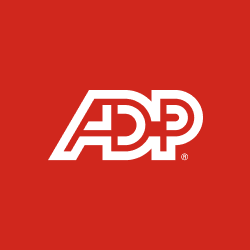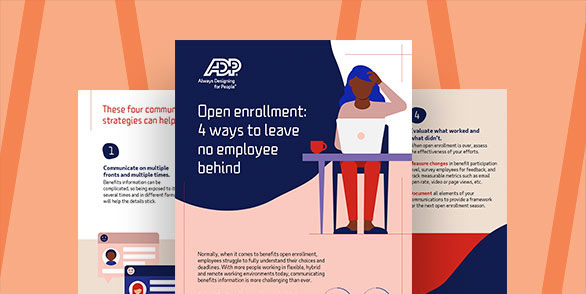FAQ
Section 125 cafeteria plan: What it is & how it works
Looking for benefits that can attract and retain top talent?
A cafeteria plan is a cost-effective way for businesses to sponsor benefits packages. It offers tax advantages for employers and employees alike and is a key component of many talent acquisition strategies.
Table of Contents
What is a section 125 plan?
A section 125 plan allows employers to offer employees, their spouses and dependents certain benefits on a pretax basis, thereby lowering the employee's taxable income. It essentially puts more money back in the employee's pocket, which can help businesses attract and retain talent.
How does it work?
Employees can opt to have money deducted from their gross earnings to pay for qualified benefits, such as health insurance premiums, health flexible savings accounts (FSAs), health savings accounts (HSAs) or dependent care assistance programs (DCAPs). These deductions not only decrease the employee’s taxable income, but also reduce the employer’s payroll tax liabilities. To sponsor a section 125 plan, businesses must employ an average of 100 or fewer employees during either of the preceding two years.
Explore Download Group Health Benefits and Business Insurance Guidebook
Cafeteria plan benefits
In addition to being tax advantageous, cafeteria plans can help employers attract and retain talent. Employees today place great emphasis on having access to flexible benefits that improve the well-being of themselves and their families. When choosing between two prospective employers, a section 125 plan could be the deciding factor.
Types of section 125 plans
Common examples of cafeteria plans include:
- Premium only plans (POP)
With this type of plan, an employee’s pretax contributions can only be used to cover the cost of group health insurance premiums. - Flexible savings arrangements (FSA)
Employees enrolled in an FSA set aside pretax dollars, which can be used to reimburse qualified medical expenses. These plans have an annual maximum contribution limit and unused funds are lost at the end of the year. - Simple cafeteria plans
Employers with 100 employees or less can receive safe harbor from plan non-discrimination tests if they make the same benefit contributions to each eligible employee. - Full flex plans
Eligible employees purchase benefits using contributions from their employer. Any benefit not fully covered by the employer can be paid for by the employee via pretax payroll deductions.
What benefits are included in section 125?
The IRS considers the following to be qualified benefits under section 125:
- Group health benefits
- Accident and disability coverage
- Adoption assistance
- Dependent care assistance
- Group-term life insurance coverage
- Health savings accounts (HSAs)
What benefits are not included in section 125?
Benefits that don’t meet section 125 requirements may still be offered by employers. They just can’t be paid for with pretax dollars. Examples include, but are not limited to:
- Long-term care insurance
- Tuition assistance
- Employee discount programs
- Work cell phones
- Moving expenses
- Commuter benefits
- Gym memberships
- Minimal or de minimis benefits
How do employers set up a section 125 benefits plan?
To set up a section 125 benefits plan, employers have to draft a document that outlines the benefits offered, contribution limits, participation rules and other information required by the IRS. They may also have to perform non-discrimination tests, depending on the plan, to ensure that it doesn’t favor highly compensated or key employees. Without the proper knowledge, these tasks can be difficult, which is why many employers enlist the help of a third-party administrator to set up and manage their cafeteria plan.

How do employers calculate section 125 benefits?
Employers who offer cafeteria plans generally process payroll as follows:
- Calculate employee gross earnings for the pay period
- Deduct contributions to section 125 cafeteria plans from gross income
- Withhold the applicable federal, state and local taxes from taxable income
- Calculate employer tax liabilities for FICA and federal and state unemployment
- Remit all payments to insurance providers and government agencies
These steps can be greatly simplified by working with a payroll service provider. Many, like ADP, are capable of integrating payroll and benefits to ensure that cafeteria plan contributions and taxes are calculated accurately each pay period.
Section 125 cafeteria plan qualifying events
Once employees enroll in a cafeteria plan and make their selections, they generally cannot change them until the next open enrollment period unless they experience a qualifying life event, such as:
- Marriage, divorce or legal separation
- Childbirth or adoption
- Involuntary loss of coverage under another plan
- Change in employment status
- Aging out of a parent’s plan
These circumstances in and of themselves are not enough to justify a special open enrollment. Employees usually have to provide a marriage license, birth certificate, letter from an insurance company or other documentation to prove their eligibility.
Who can sponsor a section 125 plan?
Generally, any employer with employees subject to U.S. income taxes can sponsor a cafeteria plan. This includes:
- Sole proprietorships
- Partnerships
- Limited liability companies (LLC)
- C corporations
- S corporations
- Government entities
What is covered under a section 125 cafeteria plan?
Cafeteria plans, depending on the provider, may cover a wide variety of medical services, including the following types of care:
- Medical
- Dental
- Vision
- Ambulatory
- Chiropractic
- Psychiatric
Certain prescription drugs may also be covered, as well as over-the-counter remedies, like allergy and cold medicine, first aid, pain killers, dietary supplements and more.

Simplify group health insurance
Choose the right options for your business with the help of licensed professionals.
Frequently asked questions about section 125 plans
What is the difference between POP and cafeteria plans?
Any plan that qualifies under IRC section 125 and gives employees the option to choose from at least one taxable benefit and one qualified benefit may be considered a cafeteria plan. POP, or premium only plans, meet this criteria, which means they are a type of cafeteria plan – one that allows employees to pay only their share of insurance premiums via pretax payroll deductions.
What does section 125 mean on a paycheck?
If employees are enrolled in a section 125 cafeteria plan, their pre-tax benefit contributions will be noted along with other payroll deductions on their pay stub.
Do I need a section 125 plan?
Section 125 plans are popular because they allow employers to offer benefits that attract and retain talent, while reducing tax liabilities for themselves and their employees. Employers should weigh their options with benefits administrators and legal counsel to determine which plan is best for them and ensure that they comply with Affordable Care Act requirements.
Ready to set up a 125 cafeteria plan?
ADP can help you save time and money while also boosting your employees’ income. Sounds like a win-win.
Want more exclusive business insights like this delivered to your inbox?Subscribe now





